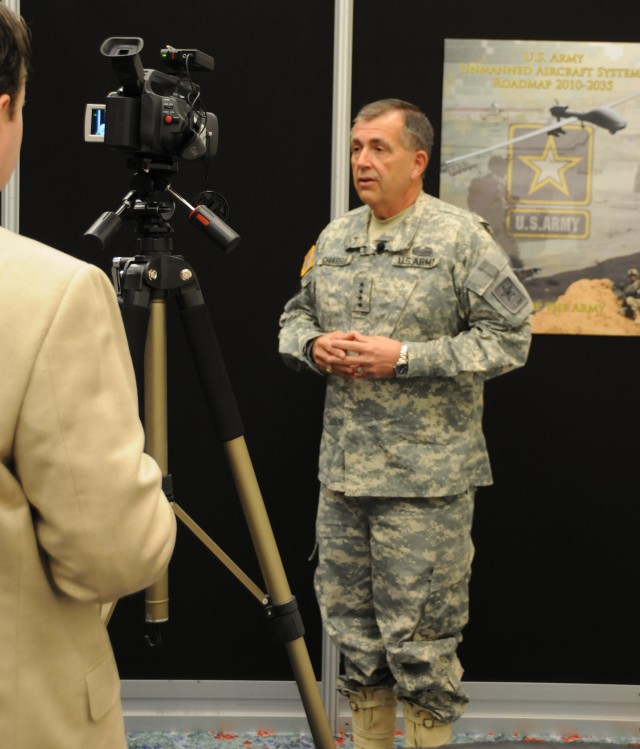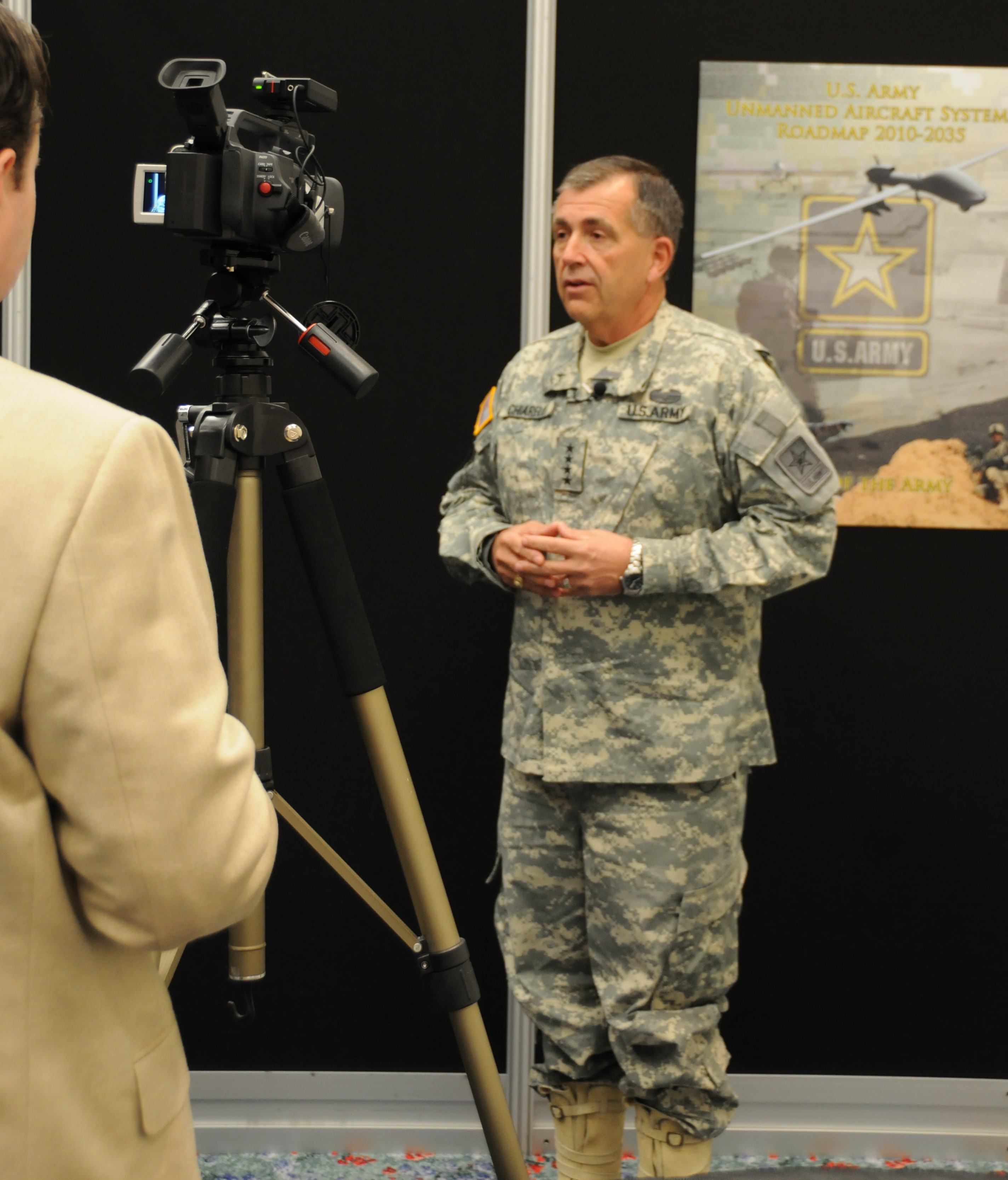FORT WORTH, Texas (April 15, 2010) -- Day one of the annual Army Aviation Association of America convention in Fort Worth, Texas, opened April 15 with remarks by AAAA president, retired Brig. Gen. Rod Wolfe, and a welcome from the host commander, Maj. Gen. William F. Grimsley, who serves as acting commander of III Corps and Fort Hood, Texas.
Aviation Branch Chief Maj. Gen. James O. Barclay III gave opening remarks and introduced keynote speaker Army Vice Chief of Staff Gen. Peter Chiarelli.
Barclay gave an update on Aviation Study II, which reviewed the findings of a previous aviation study and helps chart the course for the future of the Aviation Branch.
One of the significant findings of the study is the Full-Spectrum Combat Aviation Brigade Design that will standardize the make-up of CABs over the next three to five years. The study recommended a modular design that delivers the maximum aviation capability in the most timely and flexible manner. The design includes unmanned aircraft systems, Barclay said.
Barclay said the proposed courses of action resulting from the study are due to the Office of the Secretary of Defense this month.
Barclay added that Army Aviation is moving rapidly and continuing to meet its challenges, and he encouraged attendees to be proud of the fact that that the Army supports the Army Aviation community.
"This team we've put together, this (Aviation) enterprise...we wouldn't be able to accomplish these things if we didn't do it with a team approach, to make things happen," he said.
Chiarelli announced the Unmanned Aircraft Systems Roadmap - the "game changer" document that serves as the way ahead for Army UAS for the next 25 years.
"We're integrating UAS into all our formations downrange...but I think the biggest thing to come out of this discussion is an opportunity to sit back and think about this idea of the full-spectrum combat aviation brigade - the ability to go ahead and integrate unmanned platforms along with manned platforms. That's the direction the Army's going," Chiarelli said.
He noted the nature of the roadmap is not budgetary or programmatic. Rather, it is a conceptual, or living document that captures where the Army is with UAS and how the systems will fit into formations in the future.
Chiarelli called the roadmap "truly a remarkable document" that required a "herculean effort" by many of the people who listened to him speak in the convention's ballroom.
"There have been many technologies introduced during this eight-and-a-half years of war. However, I don't think any has made a greater impact than UAS. It's always important when you have a game changer like this that you step back, take some time to think about it and lay out your future. That's what we've tried to do in this very first UAS Roadmap," Chiarelli said.




Social Sharing